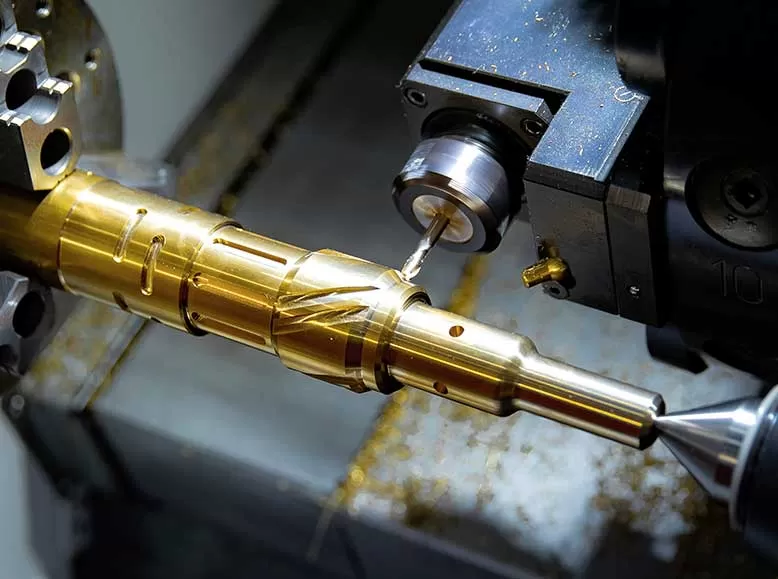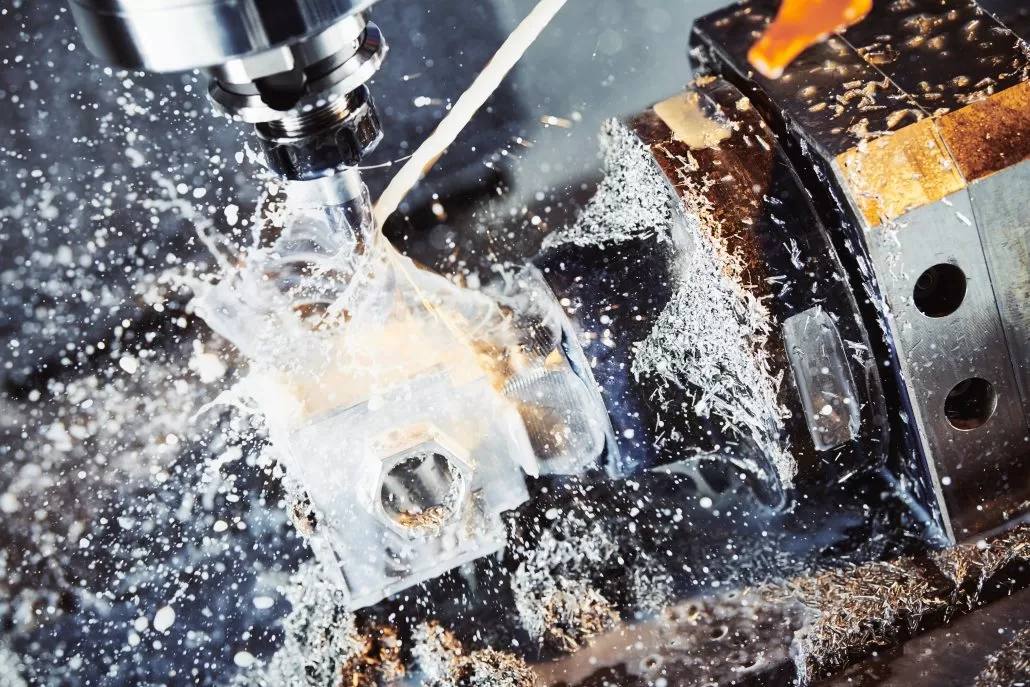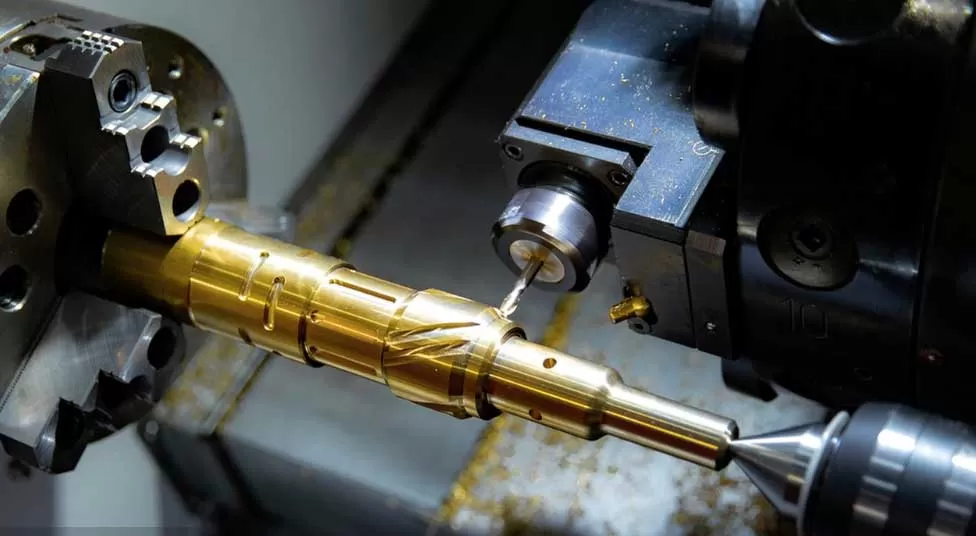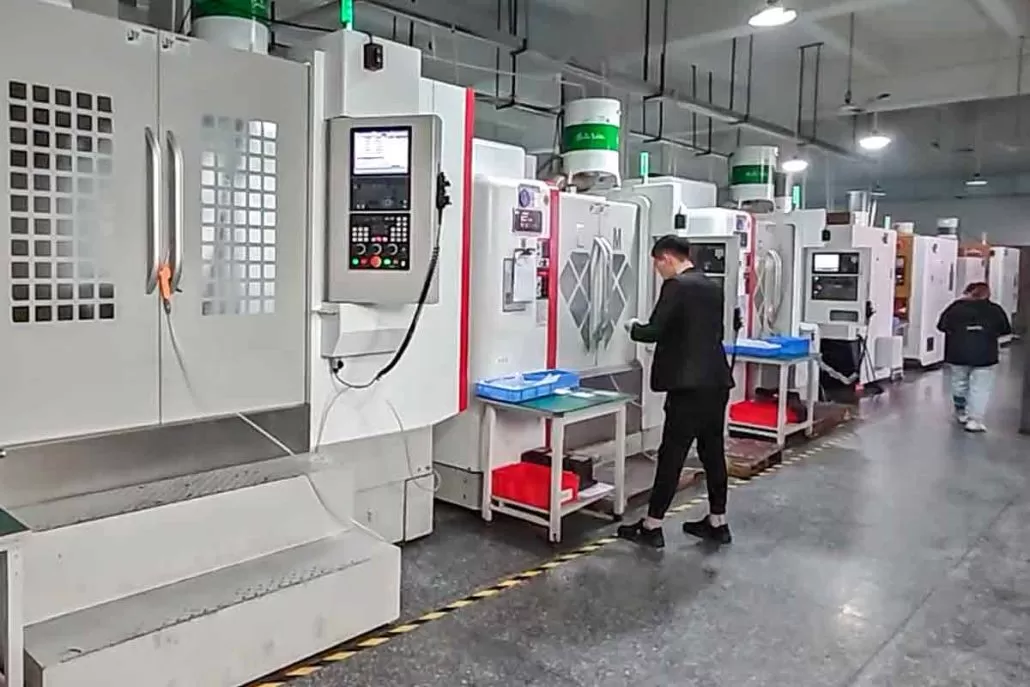Brass is a high-strength metal material with excellent conductivity, thermal conductivity, and corrosion resistance, while also being easy to process. Therefore, it has been widely applied in the field of CNC machining and manufacturing. Compared to traditional manual machining methods, brass CNC machining utilizes CNC machining equipment and produces high-precision and high-quality brass components through computer programming.
In this article, we will comprehensively introduce the brass material grade used for customized parts, the CNC machining process, and the methods for selecting appropriate machining methods. Whether you want to DIY yourself or find professional online CNC machining services, this article will provide useful information and suggestions for you.
Brass: Overview
Brass is a widely used alloy composed of copper and zinc. Its color is similar to gold, but often appears dark brown or dark red. Brass is corrosion resistant and easy to process, so it is often used to manufacture various items, such as clocks, Wind instrument, furniture decorations and metal pipes.

There are two types of brass, namely α Brass and β Brass. Among them, α Brass has a zinc content not exceeding 15% and can be used to manufacture products such as wires, springs, locks, and hinges. and β Brass has a zinc content of over 20% and is mainly used in the manufacturing of musical instruments and decorations.
Machinability of 464 Brass
464 brass is a low lead brass with a copper content of 60%, zinc content of 39%, and lead content below 1%. Used for producing various customized parts that require high machinability and corrosion resistance
The machinability of 464 brass is mainly reflected in the following aspects:
Hardness and Machinability
Brass 464 has a lower hardness but strong machinability. In CNC machining, high-speed cutting tools can be used to achieve rapid cutting and machining. Low speed can ensure that cutting tools and workpieces are not damaged during the machining process.
Surface finishing
After using CNC machining to complete the parts, surface finishing is required to achieve the expected shape and size of the final product. Due to the high softness of 464 brass, surface treatment processes such as cutting, milling, and drilling can be conveniently carried out, ultimately achieving excellent machining quality.
Chemical composition and physical properties of brass
| Chemical Composition | Physical Property |
|---|---|
| Copper (Cu): 59-62% | Density: 8.53 g/cm ³ |
| Aluminum (Al): 3.5% -4.5% | Melting point: 900-940 ℃ |
| Aluminum+Zinc (Al+Zn): 7.5% -8.5% | Thermal expansion coefficient: 18.8 × 10 ^ -6/K |
| Lead (Pb): 0.2% -0.5% | Conductivity: 27% IACS |
| Other Elements: < 0.5% | Magnetic permeability: 1.07 Tesla |
| – | Hardness: 95-140 HB |
Recommended machining parameters for 464 brass
The recommended machining parameters for 464 brass are as follows:
1.Drilling speed: 250 to 350 revolutions per minute.
2.Drill diameter: When the drill diameter is 1/2 inch, the feed rate is 0.005 inches per revolution.
3.Milling speed: The greater the friction force, the slower the speed, and a recommended speed of 100 to 150 feet per minute.
4.Cutting tools: hard alloy machining tools
5.Lubrication method: aerosol or spray lubricant
See this article 【Differences In Different Types Of Copper: Precision CNC Machining Guide】 for more information on copper machining
Brass grade suitable for custom parts machining
Brass grade is a type of brass used to distinguish different uses. Brass is mainly composed of alloys of copper and zinc, and the different proportions with other metals result in different grades of brass. These ratios also affect the hardness and ductility of brass. Below are several brass grades commonly used in CNC machining for you to choose the appropriate material.
Brass 360
Brass 360 has excellent tensile and machining properties, making it widely used in component manufacturing. In addition, it also has excellent corrosion resistance and strength. Brass 360 is the ideal choice for manufacturing parts that are easy to machine and polish.
Brass 110
Brass 110 is one of the more common grades of brass. Compared to brass 360, its strength has slightly improved, but at the same time, it still has good machinability and ductility. Brass 110 is suitable for parts that require higher strength, such as screws and joints.
Brass 260
Brass 260 is a medium hardness brass grade suitable for producing components that require tensile strength. It is stronger than brass 360, which also makes it more difficult to process. However, it has good corrosion resistance and friction resistance, making it suitable for components that require these characteristics.
When choosing a brass grade, you should consider the following factors:
1.The purpose of the parts. You need to consider the forces and environmental factors that the parts will be subjected to in order to choose a suitable level.
2.Part design will have an impact on the brass grade you choose. You need to consider the shape, size, and complexity of the parts, as well as the requirements for machining accuracy.
3.Cost. Different brass grades have different costs, and you need to weigh the relationship between cost and performance to choose the correct grade.

Price list of different types of brass grades
Below is a table of the price ranges for several common grades of brass, which may vary due to market fluctuations, supply chain factors and regional differences:
| Brass Grade | Price Range (per kg) |
|---|---|
| C21000 | 5 – 8 USD |
| C22000 | 5 – 8 USD |
| C23000 | 6 – 9 USD |
| C24000 | 5 – 8 USD |
| C26000 | 5 – 8 USD |
| C27000 | 6 – 9 USD |
| C28000 | 5 – 8 USD |
| C33000 | 6 – 9 USD |
| C34500 | 6 – 9 USD |
| C36000 | 5 – 8 USD |
Brass cNC machining steps and methods
Usually, CNC machining requires writing complex programs and needs to go through multiple steps. The following is the general process of brass CNC machining:
1.Design and Planning:
Make CAD models of brass parts as required.
Determine the machining path, cutting tools and fixtures, etc.
2.Preparation work:
Prepare brass material to ensure it is dimensioned as required.
The workpiece is fixed on the work table of the CNC machine, which requires the use of fixtures for installation.
3.Programming:
Write CNC program according to CAD model and machining requirements.
Parameters such as cutting speed, feed speed and cutting depth are determined.
Click on this article 【Can CAD Software Make CNC Parts】 to learn about the process of making parts with cad software
4.Adjustment and calibration:
The necessary calibration and adjustment of the CNC machine is required to ensure its accuracy and stability.
Check tool wear and replace or grind the tool.
5.machining operation:
Start the CNC machine and load the CNC program.
Automatic cutting and machining by following preset machining paths and parameters.
It is necessary to check the quality and size of the machining regularly, and adjust the cutting parameters or make the necessary trimming as needed.
6.Surface treatment:
Perform surface treatment of brass parts as required, such as grinding, polishing, spraying, etc.
7.Inspection and quality control:
The finished brass parts need to be inspected to confirm that their dimensions, surface quality and functional properties meet the requirements.
Carry out quality control measures to ensure product compliance.

Advantages of CNC machining of brass
Compared with traditional manual machining methods, using CNC machines for brass machining has many advantages. The details are as follows:
1.Efficiency
The efficiency of brass machining using CNC machines is very high because they can automatically complete the entire machining operation without the need for manual intervention. This means that a large number of finished products can be produced in a short period of time, greatly improving productivity.
2.Precision
CNC machining can achieve high accuracy below 0.001 inches, which is much more precise than manual operation. In addition, because the CNC machine tool will automatically complete the adjustment and calibration, Personal equation is very small.
3.stability
The CNC machining process of brass is very stable because it can accurately control various movements. By using a program to control a series of operations, the accuracy of all components can be ensured.
4.Complexity
With the help of CNC machines, more complex brass products can be made, such as products with different angles and shapes, or products with hollowed out effects. This is because the convenience of CNC machines lies in their ability to easily move and adjust the designed coordinates and parameters, as well as their ability to operate repeatedly, making manufacturing simpler and more reliable.
Brass cnc machining method
The following is the common CNC machining method for machining brass, and you can choose your own according to different needs
milling machining
Milling is a machining technique that uses a rotating tool to cut the workpiece into the desired shape and size by moving the tool along a fixed trajectory. For brass machining, milling machining is a very suitable process for manufacturing high-precision, complex components, such as cantilever beams, crankshaft bearings, camshafts, etc.
Turning machining
Turning is a cutting process in which material is cut off from a workpiece by rotating a tool. In this process, the workpiece is moved as the tool rotates in order to create the desired shape. When machining brass, turning machining can make some common parts, such as threads and splines.
Application of cnc machining of brass
The application of brass cnc machining is very wide, mainly involving the following aspects:
1.Electronic parts: Brass is used in the manufacture of electronic connectors, plugs, sockets and conductive parts.
2.Hardware accessories: Brass can be used to manufacture a variety of hardware accessories, such as bolts, nuts, screws, washers, etc.
3.Decorations: Brass materials can be processed by CNC to produce exquisite decorations, such as jewelry, ornaments, sculptures, etc.
4.Musical equipment: Brass is used to make various parts of Musical Instruments, such as mouthpieces, pistons and copper sheets for wind instruments.
5.Watch parts: Brass is widely used in watch manufacturing gear, balance, coil spring and other parts.
6.Automotive parts: Brass CNC machining can be used to manufacture automotive parts, such as cooling system components, drivetrain components, interior trim pieces, etc.
7.Architectural decoration: Brass materials can be used for interior and exterior architectural decoration, such as doorknobs, handles, stair railings, etc.
8.Medical equipment: Brass is used in medical device manufacturing to make some parts and instruments, such as surgical instruments, catheters, etc.
9.High-end hotel appliances: Brass can be used to make high-end hotel appliances, such as wine glasses, tableware, candle holders, etc.
10.Marine parts: Brass CNC machining is widely used in Marine manufacturing, for the manufacture of steering wheels, portholes, valves and other components.
conclusion
Through the above detailed description, it is understood that the application of brass in the manufacture of various parts, products, ornaments, etc., has a good prospect and market. If you need to make some complex parts or tools, consider using brass for CNC machining.
We hope this article has been helpful to you, and if you have any questions or questions, please feel free to contact us.

Longsheng Technology your best brass cNC machining partner
Still in trouble for the machining of brass parts? Don’t worry! Longsheng Technology will provide you with the most comprehensive brass CNC machining services, whether you need custom, mass production or any other type of brass parts machining, we can meet your needs.
Our services include the design, production and machining of brass parts. We can customize machining according to the drawings or samples provided by customers, and we can also provide design services according to customer needs. Our machining equipment including CNC lathes, CNC milling machines, etc., can complete a variety of complex machining technology.
Please upload your design file and contact us. We will ensure that your products get the best results in terms of time, quality and cost.
FAQ
Yes, the hardness of brass is usually higher, usually between 170 and 250 Brinell hardness values. This makes brass ideal for machining complex parts or manufacturing precision components
cnc machining is the abbreviation of computer numerical control technology. It is a technology that uses computer programs to control machines to make parts and products. Brass cnc machining is the use of computer numerical control technology to customize brass parts


